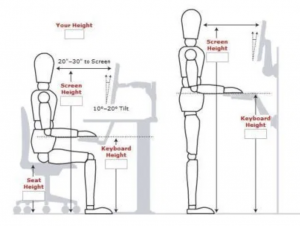carpal tunnel syndrome can be caused by several factors, some that you can’t control, but others that you can! Here is some information on how to avoid the dreaded Carpal Tunnel Syndrome (CTS) with some simple advice on changing habits.
Some Facts About Carpal Tunnel Syndrome
Carpal Tunnel Syndrome is a a nerve compression injury that results in pain, numbness, and/or tingling into the thumb side of your hand (up to the middle finger). It is caused by excessive pressure over your median nerve, often due to prolonged forces onto your wrist.
Risk Factors, according to Healthline, include history of diabetes, fluid retention/pregnancy, high blood pressure, and thyroid issues.
Secondly, work occupation also plays a role.
CTS affects 5% of the general population, and up to 21% of the working population. You are more susceptible to it if you work at a computer job and ignore up-to-date information on desk ergonomics.
So Here's The Thing You Should Avoid...
It’s been heavily marketed that wrist cushions should be used when typing on a keyboard or laptop. FALSE! The majority of cushions advertised increase the pressure on your median nerve when typing on your computer. As a result, it is best to ditch them altogether and focus on proper ergonomics.

DO NOT USE THESE. Whether it’s for typing or for your mouse, don’t place anything under your wrists. According to this article by Schmid et al, they do nothing to improve the pressure on your median nerve. In fact, they may cause carpal tunnel syndrome to worsen altogether.
What else can I do about CTS?
Many things. The National Institute of Health has a fact sheet on carpal tunnel syndrome and answers many other questions about it.
There’s also this great article by Sandra Stryker of Life’s Work PT where she delineates some great advice on sitting and standing desk posture. This picture is courtesy of her article:

If you take a look, notice that the wrists sit FLAT over the keyboard station. Some keyboards even have these pegs (called keyboard feet) that tilt it upwards. Don’t do this! It will force your wrists into sustained wrist extension, which is also risky for your CTS and median nerve.
Try to emulate flat wrists and forearms when you type, whether you are standing or sitting. The picture at the top of this article is a great example.
Try these simple tips before resorting to splints, surgery, and pain medication. If you have further questions, feel free to reach out to us. We are happy to help!

